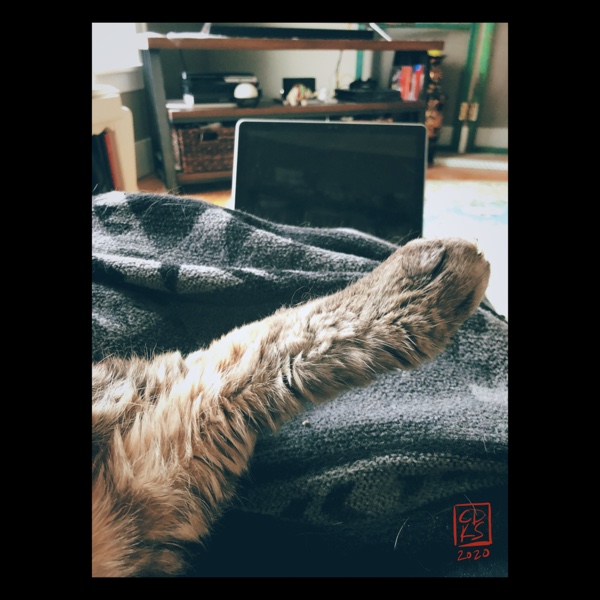Last night, my husband and I were talking about our trial run chewing the chalky tablet that is lactaid to assist with bowls of old-fashioned mint chip.
Had it worked for him as well as it had for me a few days previous? I asked.
It had, he agreed. Now, I want some [expletive] cream cheese wontons, he added.
Great! You should put some of these packets in your backpack––
The rest of my suggestion, that he could then order cream cheese wontons at work with a take-out lunch order, died without words.
Did you forget? he asked gently.
That's how this whole week has been. The bizarre familiarity in which my mind is sometimes able to forget what is happening around us. To be clear, it's not like it hasn't impacted me. We are both extraordinarily privileged to be working at home and to have spaces and internet and technology where we can do so with relative ease, but I work in study abroad so I have been focused on mitigating the impact for students however I can for most of my waking hours for 3 weeks. I'm messaging right before bed. I dream about this. I wake and check for updates with sleep-blurred eyes.
And yet the illusion of normalacy remains in every normal dinner, in every show watched, and game played.
Hank Green made a video on the Sudden Obliteration of Expectation. It's 11 minutes long, and worth every minute, so please go watch it.
In the video, Hank Green talks about points in our life where we have to wrestle with realizing that our expectations will not come to pass, that the plans we have are changed, and we have to rethink our assumptions. At the end he asks for suggestions of what we might call this end of expectation, a question that I went to bed on my mind.
Susan Bluck and Tilmann Habermas have written about the concept of a life story schema, a set of fundamental cognitive structures that we've built up into a narrative to understand how a life works. Maybe in our culture you are born, go to school for a while, get a job, get married, have children, get that promotion, and someday retire to spend time with your grandchildren. Maybe your spouse is going to the office on Monday, where he can order Chinese takeout and finally eat those cream cheese wontons he's been craving. We have an understanding of how the small events build up to a greater whole, with sense made of from actions, themes, and events. These structures give us order and clarity, help us to understand were we are in the scheme of things. There's value to this, in that we can make plans for the future and take action that we think will work toward this outcome.
That's not to say that there isn't value to breaking out of theses expectations. Study abroad, for example, is fundamentally about creating opportunity for the disorienting dilemma, in which traveling to a new location is the start of transformative learning. By seeing how are our expectations aren't universal, we can realize what we have taken for granted, and start to recognize the role we can have in shaping our own and the larger social schema and narratives.
And right now we are all in the midst of this disorienting dilemma.
All around the world, we are all running into what I propose describing as "narrative dissolution": The expected trajectory of our stories is coming apart, the threads unbraiding into a future yet to be defined. Some of results will be out of our control, especially the larger decisions of governments and the results of a cratering economy. Yet we each have our own threads in this and the chance to come together and consider what new stories are possible now.
That's not to say that any of this is easy. This is painful and scary, and we must do everything we can to help those who are the most affected by things they can't control. But as we make the hard decisions that are pulling apart the pre-woven life narratives of 2020, I hope that we can use this time of change to work together to create new paths forward, new narratives of possibility, that embrace this opportunity for a better, more caring world.
I don't know what is coming, but I am heartened to see where we have already started.
---
Bluck, S., & Habermas, T. (2000). The life story schema. Motivation and Emotion, 24(2), 122-147.
Mezirow, J. (1991). Transformative dimensions of adult learning (1st ed.). San Francisco: Jossey-Bass.
Categories: pontificating, social, sociology

